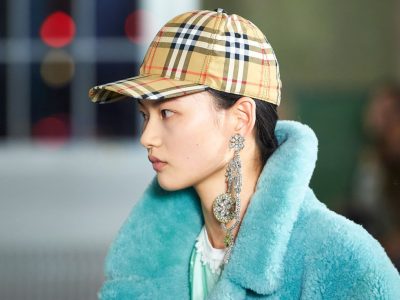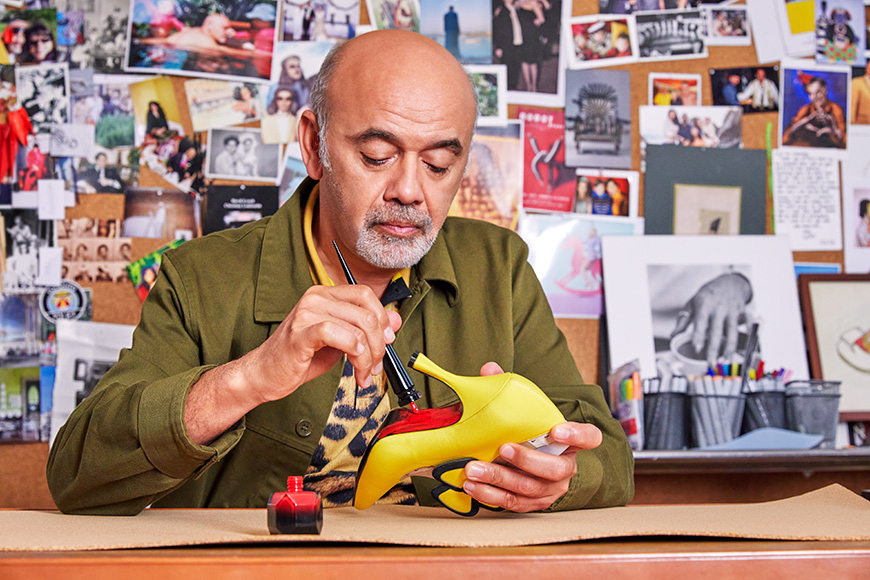The battle between Moti Mahal and Daryaganj restaurants on right to be called the inventor of butter chicken is in the Delhi High Court, and everyone is eagerly waiting for the outcome.
The case, however, has thrown up problems related to copyright for brands in India.
Safir Anand, an accomplished brand strategist, author, and IP lawyer, says that when he started working in the field of Indian fashion 15 years ago, he discovered that very few designers ever got their design registered for copyright or understood the importance of legacy planning.
“They encountered rampant copying and suffered silently,” says the lawyer who is a senior partner at Anand and Anand, a law firm which has fought many cases related to Intellectual Property (IP).
Fast forward to today and Safir has worked with almost all — from the biggest like Sabyasachi Mukherjee, Anju Modi, Tarun Tahiliani, Shantanu and Nikhil, Ritu Kumar to emerging labels.
Earlier they used to tell him this pursuit of legality is “useless”, as they had resigned to their “fate” — they will always “be copied”, no matter what. Today Sabyasachi gets all his designs “protected” before he releases them on social media.
“Corporatisation helped this exercise also with mega players coming into fashion— like Reliance and Aditya Birla Group. When the issue of valuation came up, they had to get IPs registered,” adds Safir.
Interestingly, Indian laws are obsolete unlike in the West, where you have both, design and copyright laws.

In India, if you are reproducing a design more than 50 times, you can’t copyright it.
“I urge them to register their designs before the launch, all the patterns,” he says.
This is sometimes difficult as the designer says there are so many, and he doesn’t know which one will become a hot favourite. He claims that he will only know about the best-seller once consumers press the “add to cart” button. The designer then refrains and misses the boat.
Indian designers are suffering, as only big ones pay money, and register. Many of them are also fighting among themselves over copying allegations, and that becomes another problem to handle.
“We at Anand and Anand try to educate them and explain the difference between inspiration and copying,” Safir adds.
Indian style guru Rajesh Pratap Singh, for example, has protected his “selvage” — the red line that runs across all his jackets, the same way that Tod’s has protected the dots at the back of the shoe; Christian Louboutin, the red sole; or Louis Vuitton, the Epi Pattern; and Burberry, the check.
IPR also protects photographs before release through a watermark. You can enforce this on social media, if someone picks them up.
“When I was doing some window-shopping at an airport, I stumbled upon the exact replica of my design with just heightened colours. Instead of a dress, this was a kurta. On sending a legal notice to them, they shamelessly sent back 10 pages stating that I forfeit my own design if I have used it for a certain period and have used it a certain number of times. After my legal notice, they did not have the [guts] to sell the style so all the pieces had to be retracted from all the stores in A and B towns, and from their website,” said designer Nida Mahmood on Facebook sometime back.
But she is not alone in this battle.
“We all are fighting cases with our hands tied. These cases go on for years and it is a very tedious procedure. In Paris, there is a strong and immediate penalty. We do not have something like that,” Ritu Kumar had said.
Manish Malhotra has sent notices to many as his pictures are misused.

“With such growth, there are bound to be imitations. Across the world, people try to imitate our logo, label, and work,” says Malhotra.
Amazon too has set up brand registry, what in legal terms is known as “intermediary liabilities”. If the seller is selling fake goods, Amazon will not be liable. They are asking brands to register before they sell.
“They are asked to show IP documents and then they can sell their products on Amazon,” says Safir.
Instagram has also understood IP and will take down any content that is copied, if you lodge a complaint.
“I had bought identical copies of my clothes with their (Delhi designer) label at a store in Dubai, we both retail from. I carried them back, but the Indian legal system doesn’t give you recourse for much,” says Tarun Tahiliani.
Safir believes it is a fight between copyright and design and designers must check originality before embarking on anything.
“If you go to Chandni Chowk, they will show you an album of all the designer copies, but no one knows where the manufacturing is taking place. You order and the bridal trousseau reaches your home. How will you catch them?” he asks.
On the other hand, if you fine him Rs 5 crores in a swift legal manner, it will deter him!
“It’s not only about fashion, design in any form is unprotected in our country. So, the problem is the legality. But we can’t stop being creative. That’s for sure. I am still fine with ‘inspired collections’ but copying something bit by bit is completely unacceptable,” says Suneet Verma.
“If you take the case of Apple, they finished music piracy by charging money for downloads after tying up with various record companies,” adds Safir.
‘Trademark’ means a mark capable of being represented graphically and can distinguish the goods or services of one person from those of others. It can include a device, brand, heading, label, name, signature, word, letter, numeral, shape of goods, packaging or combination of colour.
You may apply for and claim trademark protection in your name, collection name or trading style.

The initial registration is for 10 years, and it can be renewed till perpetuity every 10 years. You may claim trademark rights in an article or design if the same has acquired distinctiveness.
Safir is also the creator of the unique property IP Feast, which showcases young brands, helping them get an audience — whether it is food, art, fashion et al. He started with 13 unique brands last year, then 31 in the second edition, and now aims for more than 100. The participation is free, as the mission is to help bring out uniqueness, which is the cornerstone of IP
Branding India
Safir worked on the concept of ‘India’ from various angles – be it its brands, be it its culture, its heritage or in one word, its creative economy.
He took to many platforms and assisted governments and think-tanks as an expert on promoting India as a brand. Come 2023 and it was only plausible that his initiative ‘IP Feast’ came about as a platform to celebrate and promote ‘Make in India’.
The first edition of IP Feast was held in Delhi in May, 2023 followed by IP Feast 2.0 in December, 2023.
The event brings together homegrown brands, speakers, performers, artists and thinkers from across India. That is not all. The festival also promoted sustainability, inclusivity and diversity.
An example is the ‘IP Feast’ welcoming children from ‘Salaam Baalak Trust’, an NGO working with street children to perform at the event. This not just promotes skills these children are picking up at the Trust but also provides them a window to the world and all the wonderful possibilities it holds for them.
He is also ready with his new book titled India Unboxed. It will be launched this month at the Jaipur Literature Festival 2024.
In a society with many fault-lines, this book celebrates our glorious past, our quirks and our deep-rooted cultural traditions that unite and define us.
“While there are many things that divide our country of more than a billion people, our love for baarish (rains), Bollywood and boondi laddus bind us together. Or is it chaat, chai pe charcha and champi? India Unboxed is a salute to our diversity, our unsung heroes and our unapologetic desi way of living,” he says.

“Aspects that will warm your heart, baffle you or simply make you laugh! This stunning illustrated edition written in an engaging style is a heartfelt tribute to an ancient civilisation but a nation young at heart. A country on the cusp of becoming a Vishwa Guru that still epitomises why ‘we are like this only’,” he concludes.
What brands should do:
File an application for design registration prior to the launch of the collection or its publication in any form. Once the application for design registration is filed, the collection can be showcased.
In case of a couture collection, where the designer is confident that more than 50 copies of the article will not be made, copyright registration can be sought.
Though copyright subsists inherently, a copyright registration is required for any criminal action. A civil copyright infringement action can be filed even though there is no copyright registration.
Symbols such as®, TM and© must always be used wherever applicable.
It is of utmost importance to have strong employment contracts with your artists and designers. Clauses related to copyright assignment must be present in the employment contract in order to avoid any dispute related to the ownership of the work.
Confidential information must be protected adequately in all vendor contracts. Protect trade secrets exhaustively through such contracts.
Trademark your name, name of collection, unique packaging in order to create exclusivity.
You may trademark a unique design or even a product if you have evidence to show acquired distinctiveness and exclusivity.
Internet Domain names in various forms must ideally be registered to ensure adequate protection.
Be vigilant and take immediate action against copycats.
You may apply for and claim copyright protection in:
Your sketches, drawings, art-work
Copyright in artistic work means the exclusive right to reproduce the work, communicate the work to the public, issue copies of the work to the public, include the work in any cinematograph film and make any adaptation of the work.
Protection granted for life of author and 60 years from the date of demise of the author
Famous case:
Hermes International and Anr Vs. Sahil Malik and Anr., CS {OS) 1859/2012. The suit was filed by the plaintiffs claiming trademark protection for their registered shape mark in the famous “Birkin” bag against its misuse by the defendants for identical goods.





